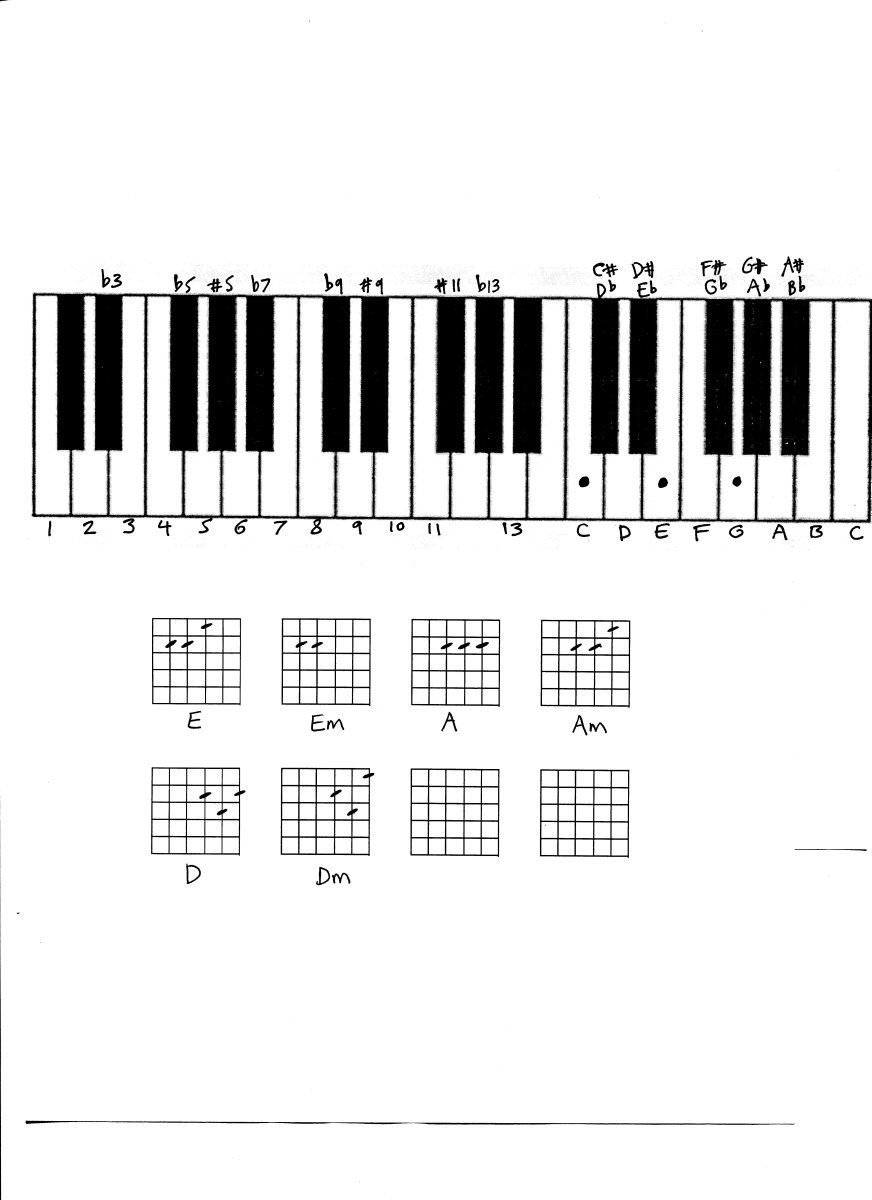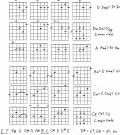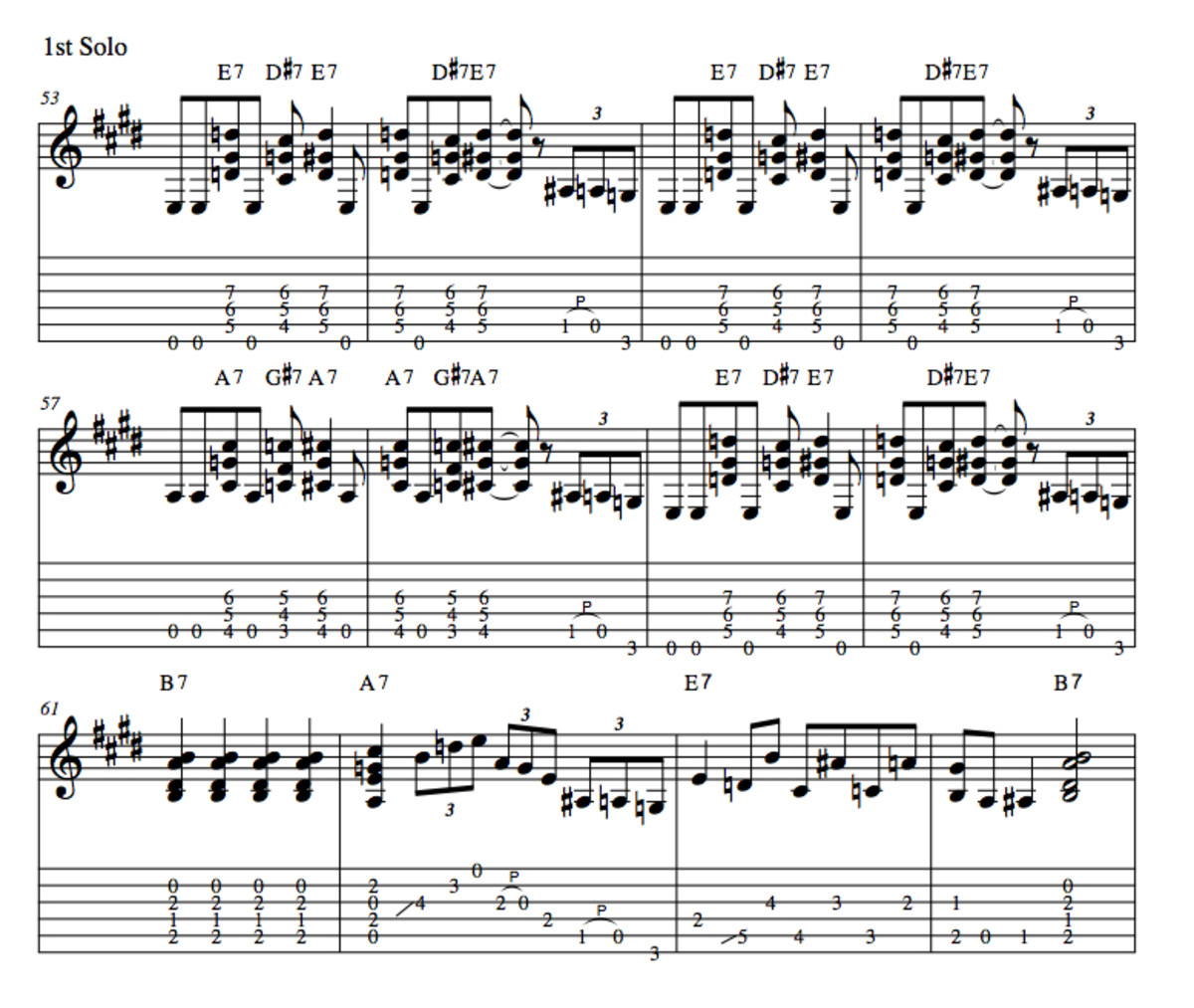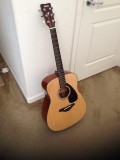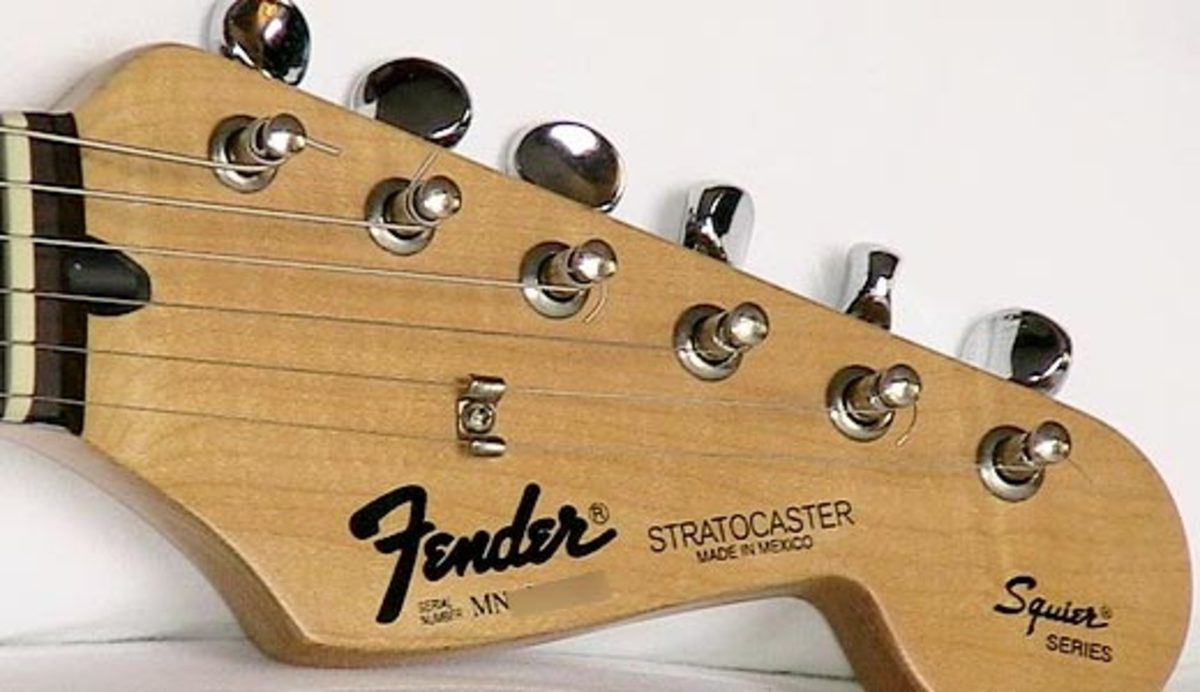Guitar Lesson, Chords in G
Chords and scales in G
G major is a popular key for guitar songs, for good reason - the open strings available make most chords sound great. In this article I'm trying to expand the use of open strings to give the chords a fuller and more interesting sound. Quick theory - which is covered in detail in my other hubs:
In the key of G we find these chords used together:
G / Am / Bm / C / D / Em / F♯m7b5 / G
- each chord built on a note from the major scale.
At the risk of stating the obvious: learning this sequence of notes will cover both the major scale, and all the chords associated with it.
The G major scale is G A B C D E F♯ G. Notice that there is one sharp note, reflected in the key signature for this key.
The 2 scales that work with these chords, either as a melody line or a bassline, are G major and Em pentatonic. For playing lead guitar in G - Em pentatonic is the easiest, as there are less notes to worry about, and you can do pull-offs to the open strings. But they both work fine.
Chords and Scales in G
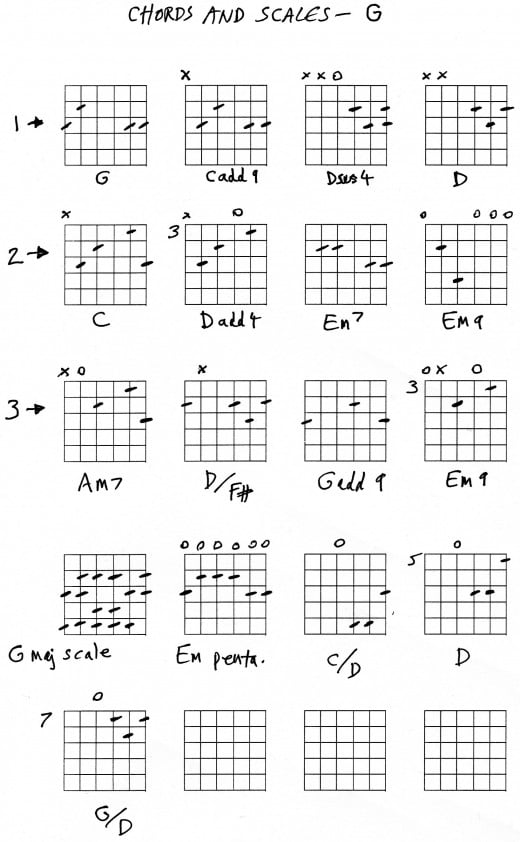
Reading Chord Grids
The 6 vertical lines are the strings, the horizontal lines are the frets. Open strings are denoted by 0, where the headstock would be.
Chord progression 1
This is a full sounding version of G, moving across one string you have C add9, then Dsus4 to D. To play D sus4 (or D with a G note added...) just play your normal D shape and play the top note with your little finger. You can often use C add9 instead of C in this key, it will usually sound better.
Why the key based approach? - because when you learn a new song in the same key you will have a whole bag of tricks and improvements you can use with confidence.
If you play this set of chords backwards, it will be like Sweet Home Alabama by - no, I'm not going to try to spell it.
Green Day's popular song Time of Your Life uses just these chords, plus Em. Check out my hub Guitar Comedy for a great parody of this song.
Chord progression 2
A nice way to play C to D - just slide the shape up 2 frets. Em7 is used in Wish You Were Here, Heart of Gold, Wonderwall etc.
Chord progression 3
Am, D, G is a common progression. Here it is tweaked a little to improve the sound. The D chord is an inversion - with an F sharp note in the bass. This helps to make a smooth transition to G.
Chords on top 4 strings - good for playing with other guitarists, as they complement the low position chords so well. Especially good for recording, a concept used by The Beatles. The G here is just a D shape moved up the fretboard. Also, use the top 2 strings in these chords to play harmony lead parts.
Remember when you're playing lead that the guitar is polyphonic - harmony in 3rds or 6ths sounds great, and can be mixed in with single-note runs at any time. In this key, Brown Eyed Girl by Van Morrison is a good example of this. Harmonics are also easy to use because they will come out in the right key. If you're in the key of G you can use pull-offs to open strings, which works best on strings 3 and 4, as G and D are both notes in the chords anyway -try playing up the 3rd G string 0 2 4 5 7 9 11 12, with pull-offs to the open string. It's easy, but sounds impressive.
Slash Chords - this uses so-called slash chords. C/D for example, means a C chord over a D bassnote. Actually quite simple, when you start using these chords it will improve your playing instantly.
Theory
If you number the chords in G, chords I, IV and V are G, C, D.
Most easy songs, Dylan early period, folk, country and bluegrass, will use these three chords, sometimes with another chord from the sequence added.
More theory
The numbers in a chord name describe an interval - that is, the distance of the added note(s) from the starting point, the tonic or bass note of the chord.
So C add9 just means a C chord (CEG) with a D (9th note starting from C)
C D E F G A B C -that's 8, then start again D E F G A....
If we described this chord in numerical terms, it would be 1,3,5,9
It's easier to see this on a piano keyboard.

